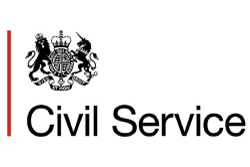Civil Service Situational Judgement Test
Page contents:
Jump to:- About Civil Service Situational Judgement Tests
- Civil Service application process stages
- Civil Service situational judgement test questions
- Situational Judgement tests and who uses them
- What you should know before taking your situational judgement test
- Different types of situational judgement tests
- Answered questions
About Civil Service Situational Judgement Tests
The Civil Service looks for employees with a high ability to handle various situations in a specific manner. Applicants have to pass a situational judgement test before being offered a position.

The Civil Service use the following tests in their selection process:
- Numerical reasoning test
- Verbal reasoning test
- Behavioural questionnaire
- Situational judgement test
- E-tray
| Assessment section | Recommended Practice Pack |
|---|---|
Civil Service Situational Judgement test | Situational Judgement Test Pack
|
Civil Service Behavioural test | Personality Questionnaire
|
Civil Service Personality test | Personality Test Pack
|
Situational judgement tests are a fair and objective way for the Civil Service to assess a wide range of applicants, each having different experiences and different qualifications. By analysing the results of a standardised situational judgement test, the Civil Service are able to quickly see which candidates are suitable for the role and which are not. This sort of information about candidates’ skills is difficult to glean from interviews and qualifications alone, so they use professional psychometric tests.
Often, the Civil Service will ask applicants to take a situational judgement test online, which you can take from home. When the situational judgement test is used early on in the application process like this you will have to achieve a minimum score before you progress to the next round (typically a score in the top 50% of applicants is required however this does vary role to role). Further along in the selection process you might be asked to attend an assessment centre or interview where you will be asked to sit a situational judgement test again. This is so the Civil Service can verify the person scoring highly in the test is indeed the person applying for the job.
Civil Service Application Process Stages
Stage 1
| Online Application | You will need to complete an online application form, in which you will need to detail your educational history and choose the positions you would like to apply to. |
|---|
Stage 2
| Online Situational Judgement Test and Behavioural Questionnaire | Shortly after submitting your application, you will automatically be invited to take a Situational Judgement test online under timed conditions. The test is quite short, and most candidates complete it under 30 minutes. The second test will be a behavioural questionnaire. You will have 5 days from submitting your application to complete these two tests. |
|---|
Stage 3
| Online E-tray test | If you have met the required criteria to pass the situational judgement test and behavioural questionnaire in the previous stage, you will be asked to take part in an e-tray test. These tests are simulations of an e-mail inbox, and all the material will be relevant to the Civil Service. This exercise will last for 80 minutes. You will get the opportunity to practice a few questions beforehand, and the Civil Service have some useful information online. |
|---|
Stage 4
| Video Interview | The video interview is described as a one-way recording. Typically, in a video interview you will be given a set of questions to respond to. You will then use the software provided to record your responses to these questions. You will be asked 9 questions and the interview should take about 30 minutes to complete. Use the freedom here to plan your responses to the questions well, even if that means redoing the recording. You will often get the opportunity to view and check the recording before submitting it. Ensure that your answers are relevant to the questions asked. The Civil Service state that you can record your responses from your mobile phone, tablet or any PC with a webcam. |
|---|
Stage 5
| Verbal and numerical reasoning tests | After having successfully passed the situational judgement test, behavioural questionnaire and the video interview, if you have applied for a Finance or Commercial role, you also be asked to complete a Numerical test after this stage. The numerical reasoning tests is provided by Cubiks and will assess your ability to reason logically, and analyse numerical data, which are very important skills to have for any financial position. You may also be invited to take a verbal reasoning test online, the CSVT. This will not be under timed conditions although most candidates answer all questions within 15 and 45 minutes. |
|---|
Stage 6
| Assessment Centre | Once you've managed to win over the Civil Service with your video interview responses, your scores in the SJT, behavioural questionnaire (and the numerical reasoning tests), the final stage will require you to attend an assessment centre and take part in an interview, a group, an analysis and a leadership exercise. During the group exercise, the assessors will be evaluating how well you form relationships with other, new people, and how you contribute to the team. A detailed guide has been produced by the Civil Service. |
|---|
Join those now working at top companies
Don't settle for 'try again next year'. Let us help you pass employer tests first time.
Try now for free
The Civil Service Situational Judgement Test Questions
Like most situational judgement tests, the one used by the Civil Service looks at how you would handle and respond to typical, and rare, situations and scenarios that occur in the workplace. The situational judgement test will be assessing your speed and accuracy. The answers are multiple choice and you should try to work quickly within the time limit, but also accurately. Negative marking is unlikely to be used but do not guess answers, as this will show up in your accuracy score. With practice you will become familiar with the type of situational judgement tests used by organisations such as the Civil Service.
Situational judgement tests and who uses them
Companies are using situational judgement tests more and more in their application process that candidates must go through. A person's score in a situational judgement test is a good indicator of how closely their attitudes and responses to situations mimics those of the company they've applied to. This is important in any sector or position.
The Civil Service use situational judgement tests as part of their recruitment process to help them select the best candidates for a particular role.
So as a graduate or senior candidate applying for a job at the Civil Service you might feel like the situational judgement test is an unnecessary hoop to jump through. But you should bear in mind that the Civil Service are asking you to complete the situational judgement test as much for your own benefit as theirs; if you are not suitable for the role, a psychometric test will usually identify this. Research has shown that psychometric tests, such as those used by the Civil Service, are a better predictor of job performance than traditional selection metrics such as level of degree achieved.
What you should know before taking your situational judgement test
The situations described in standardised situational judgement tests are ones which applicants can expect to face whilst performing the job they've applied for. The difficult aspect comes with identifying the details in the situation, which would help you to choose the appropriate courses of action to take, quickly and accurately within the time limit. Here are a few examples of the most common situations you can expect in your situational judgement test:
- Unsatisfied customer
- Stock-related problems, such as delivery
- Disagreements between work colleagues
Different types of situational judgement tests
Most questions in most situational judgement tests follow a standard format displaying a passage of text, the question and answer options on screen. These can be arranged differently, but each test will stick to the same layout throughout. The question text may contain extra information which adds to what's given in the sequence of images, this might also be necessary to answer the question correctly. You might have to guess which answer option is the next in the sequence, or which options represents a missing step in the sequence. Lastly, the answer options are almost always multiple choice. Multiple choice answers can vary, however. You may have 2 options to pick from, 4, maybe 5, and these will have to be ranked too. The more answer options to pick from, the slimmer the chances are that you can obtain the correct answer by guessing.
Answered questions
Are these tests suitable for the Civil Service?
Yes, the Civil Service use Cubiks's reasoning tests to assess applicants in the recruitment process. The practice tests we provide have been designed to mimic Cubiks's style to create an environment similar to the real assessment. This provides you with confidence that the questions you practice with us now are an accurate reflection of the real assessment.
How difficult are your tests?
The same difficulty as real tests. Generally real employer selection tests don't differ that much in terms of difficulty which is why they compare your score against norm groups. Our practice tests are pitched roughly at graduate level, but this means they are actually suitable for preparing for all levels of job: entry; apprentice; graduate; senior; director.
Are they compatible with my Mac / Tablet / Phone?
Yes, and PC, and Linux and smartphone and Android and...everything. Our practice tests will run on all systems and they are responsive so they will work well on tablets and smartphones too!
How many times can I take the tests?
Unlimited. You can take our practice tests as many times as you like; there is no limit. But to be honest, after taking the same test a few times you start to remember the answers, so that’s why we have lots of tests.
